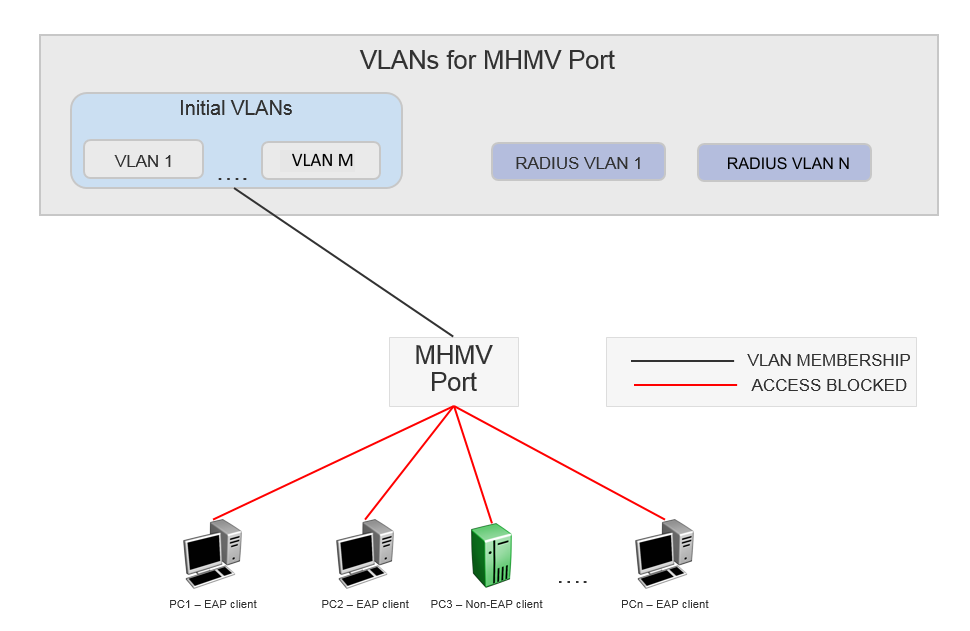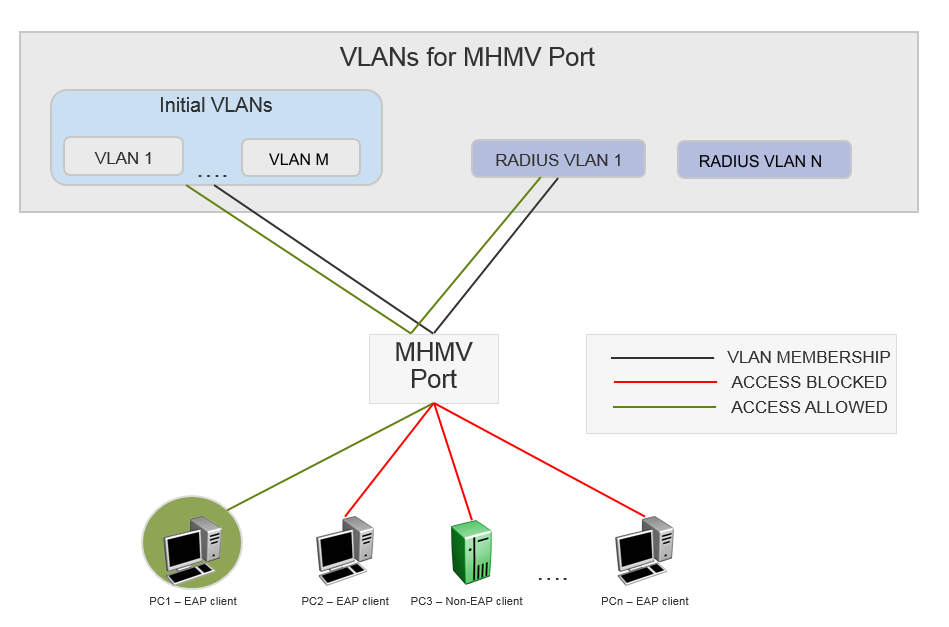Multiple Host Multiple VLAN Usage
-
Clients (n) connect to a switch port. The maximum number of clients (EAP + NEAP) allowed on a port is 8192.
-
EAP is enabled and the default operation mode is MHMV.
-
Modify client counters to authenticate n clients.
-
Initial VLANs are the VLANS which are manually set up before EAP is enabled.
-
Port default VLAN ID is equal to one of the initial VLAN ID.
-
All clients are unauthenticated, hence the clients cannot access the network.


Note
The clients cannot access the network as they are not authenticated.
-
Client PC1 does not receive RADIUS VLAN attribute:
-
There are no changes to the port membership and port default VLAN ID.
-
PC1 is the only client that is allowed access to the initial VLANs.
-
A VLAN MAC rule is added that associates the MAC with the default VLAN ID.
-
If the VLAN is configured on the port, then the tagged traffic from PC1 is forwarded to the VLAN associated with the tag.
-
Untagged traffic from PC1 is forwarded to the port default VLAN.
-
-
Client PC1 receives RADIUS VLAN attribute:
-
The port is left in all initial VLANs and added to the VLAN corresponding to the RADIUS VLAN attribute.
-
Port default VLAN remains unchanged.
-
A VLAN MAC based rule is configured for client PC1.
-
Using the VLAN MAC based capabilities, the untagged traffic from PC1 goes to the RADIUS assigned VLAN 1 as shown in the figure below.
-
Client PC1 can access all initial VLANs using tagged frames.
-
The remaining clients stay unauthenticated and cannot access any VLANs.
-


Note
PC1 is authenticated with RADIUS VLAN 1. The other clients cannot access the network as they are unauthenticated.
-
The MAC VLAN rule is removed from the switch.
-
If the RADIUS VLAN attribute was used with the client was authenticated and no other clients are authenticated on that RADIUS VLAN, then the port is removed from the VLAN.
-
The RADIUS accounting attribute Acct-Terminate-Cause indicates how a session was terminated.
-
The RADIUS accounting attribute Event-Timestamp indicates the time that an event occurred on the Network Access Server (NAS).

